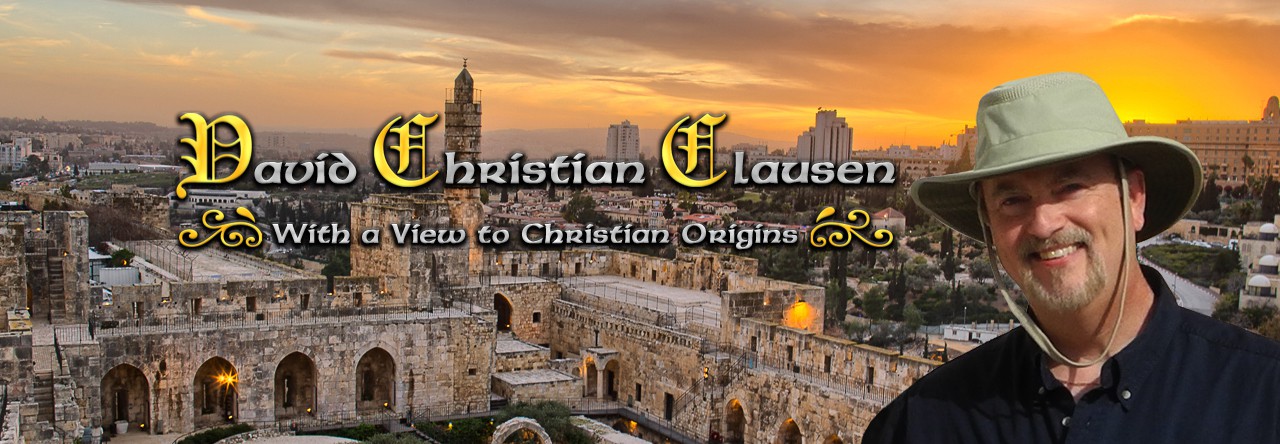At Christmas time, believers naturally focus on imagery recalling the birth of Jesus. Visual depictions of a crèche filled with figures representing the holy family, wise men, shepherds, angels, and various livestock are meant to recall the events depicted in the Gospels of Matthew and Luke. But few may realize that the elements of a typical nativity scene is a conflation of story details taken from these (entirely different) birth narratives as well as from other, later, texts not part of the New Testament.
In the Gospel of Matthew we read of a star which is followed by an unspecified number of wise men (ancient sages perhaps meant to symbolize the magi of Persia). Later tradition limits them to three and the sixth-century Excerpta Latina Barbari gives their names as Bithisarea, Melichior and Gathaspa, that is, Balthasar, Melchior, and Gaspar. According to Matthew, Jesus is born in the Bethlehem home of Joseph and Mary. The Gospel of Luke, on the other hand, tells of a (historically unverifiable) census that causes Joseph and Mary to travel to Bethlehem in order to be counted. There, Jesus is born in a manger due to overcrowding. But shepherds are duly notified by angels of Jesus’s birth and go to see him. In less than a century, however, early Christians found these sparse details unsatisfactory and began adding details to the nativity story found in later writings; many of these details remain with us in holiday imagery and song.
The earliest of the “apocryphal” nativity accounts is the second-century Proto-Gospel of James. The text was named “proto-gospel” because it narrates events that lead up to the gospel stories themselves describing, for example, the birth of Mary and her subsequent childhood. In this text, Joseph already has sons (the brothers of Jesus named in the Gospel of Mark) when he weds Mary and all of them travel together to Bethlehem on account of the census. There, Jesus is born in a cave (supposedly to be found under the fourth-century Church of the Nativity). Just as in the canonical Gospel of Matthew, Herod attempts to slaughter the young children of the village, but in this text Mary hides Jesus in an ox manger (though only sheep are mentioned in the Gospel of Luke, oxen are usually depicted in nativity scenes today).
The Gospel of pseudo-Matthew, possibly written in the 7th century, places an ox on one side of Jesus’s crib, an ass on the other. Again this imagery is repeated in modern representations of the manger scene. Such an arrangement may be based on Isaiah 1:3, “The ox knows its owner, and the ass its master’s crib; but Israel does not know, my people does not understand.” Pseudo-Matthew offers more detail about the flight of the holy family to Egypt, a journey only mentioned in canonical Matthew. For example, during the desert sojourn, a palm tree bends down to afford Mary an opportunity to reach its nourishing fruit. This episode is now commemorated in the “Cherry Tree Carol,” a popular yuletide carol sung at Christmas time although the fruit in the song has been changed from dates to cherries.
The sixth-century Arabic Infancy Gospel adds some interesting details to Jesus’s birth story. For example, the wise men are given one of Jesus’s diapers (!) which turns out to have magical powers; it survives being thrown into fire, for example. It is during the holy family’s trip to Egypt that Jesus encounters two other children who turn out to be the robbers who will be crucified on either side of him some thirty years later.
A Latin Infancy Gospel, written between the sixth and ninth centuries, adds some details about Jesus’s birth, an event which fills the cave with a bright, glowing light (virtually eliminating any notion of a natural birth). Symeon, here said to be a son of Joseph, plays a role in dialog with his father. The Gospel of Mark does name one of Jesus’s four brothers Simon; he is perhaps the youngest as he is named last. But later traditions tell of a Symeon who is not the son of Joseph but rather of Joseph’s brother Cleophas. It is this Symeon who was said to have replaced Jesus’s brother James as leader of the Jerusalem Christian community after James’s death. Simon and Symeon were likely confused in the early decades of the church.
The fifth-century (or earlier) Revelation of the Magi is composed as if written by the magi themselves. It describes their witnessing the birth of Jesus, not from Mary’s womb but as a transformation from the star they have followed to the cave in Bethlehem. After witnessing the “birth,” the magi confront Mary and Joseph outside the cave and are accused by the fearful parents of coming to steal away “the light and the great hope of the whole world.”
Further details of Jesus’s youth are offered in other non-canonical texts. Joseph’s death is recalled in the fourth century History of Joseph the Carpenter and takes place while Jesus is young. The fanciful exploits of the youthful, if precocious, Jesus are detailed further in the Infancy Gospel of Thomas.
Early Christians were just as curious about the circumstances of Jesus’s birth and infancy as are modern believers and historians. Attempts to fill in the gospels’ narrative omissions led to the composition of a wide variety of literature fortunately still available to us today in modern English translations. The study of these can add immeasurably to our understanding of the early church and their equally strong “need to know.”
